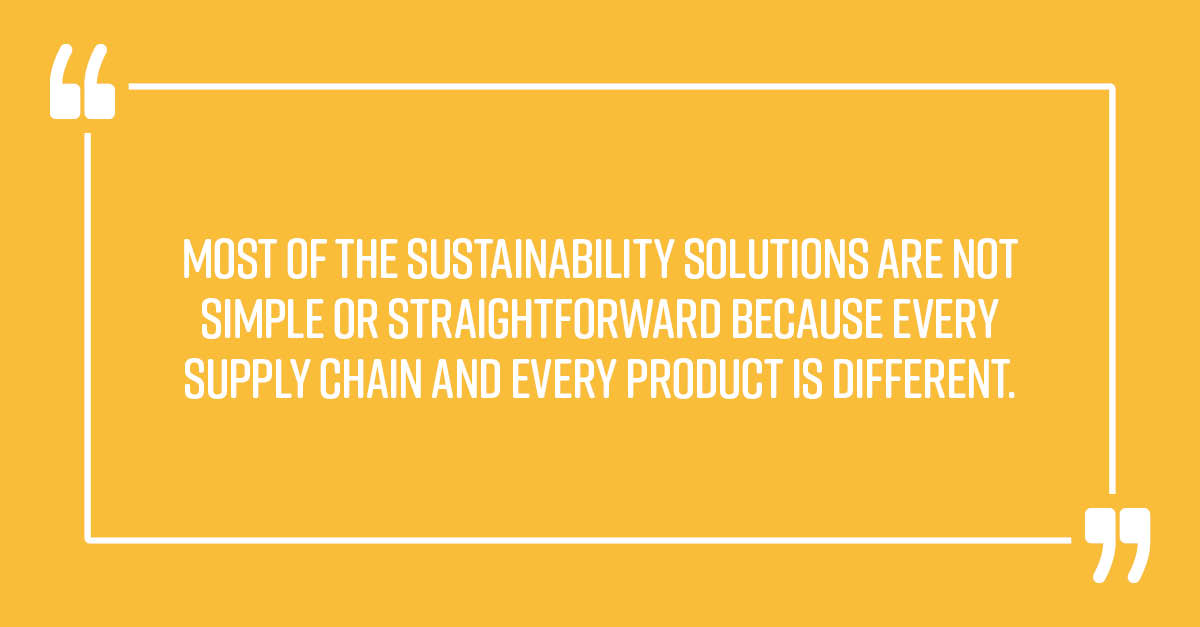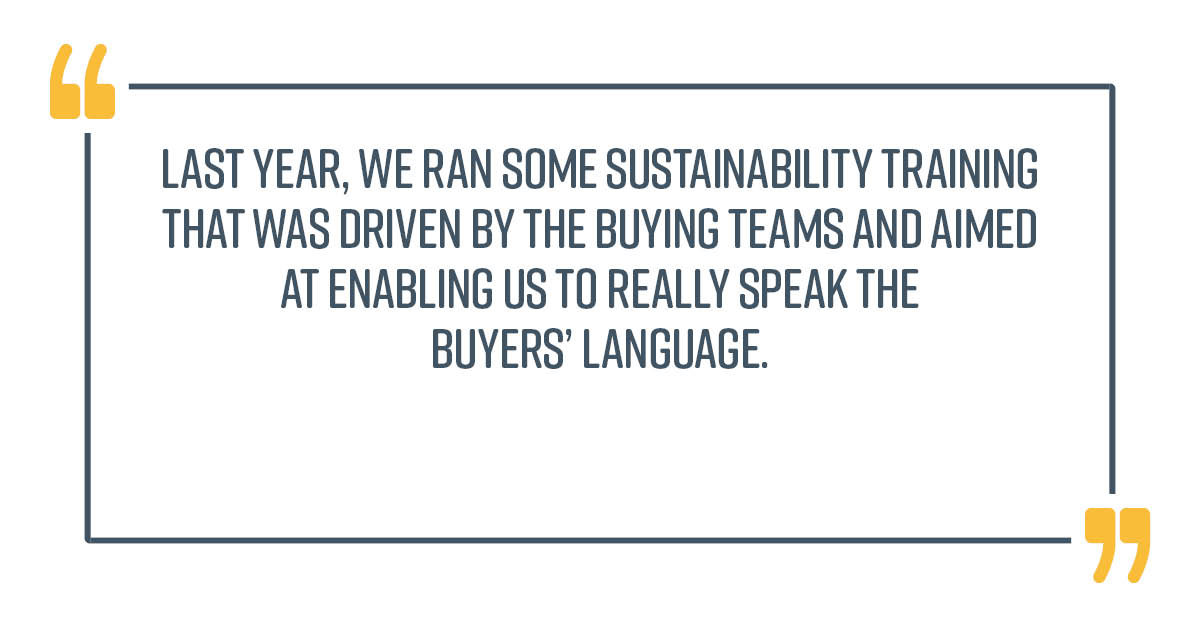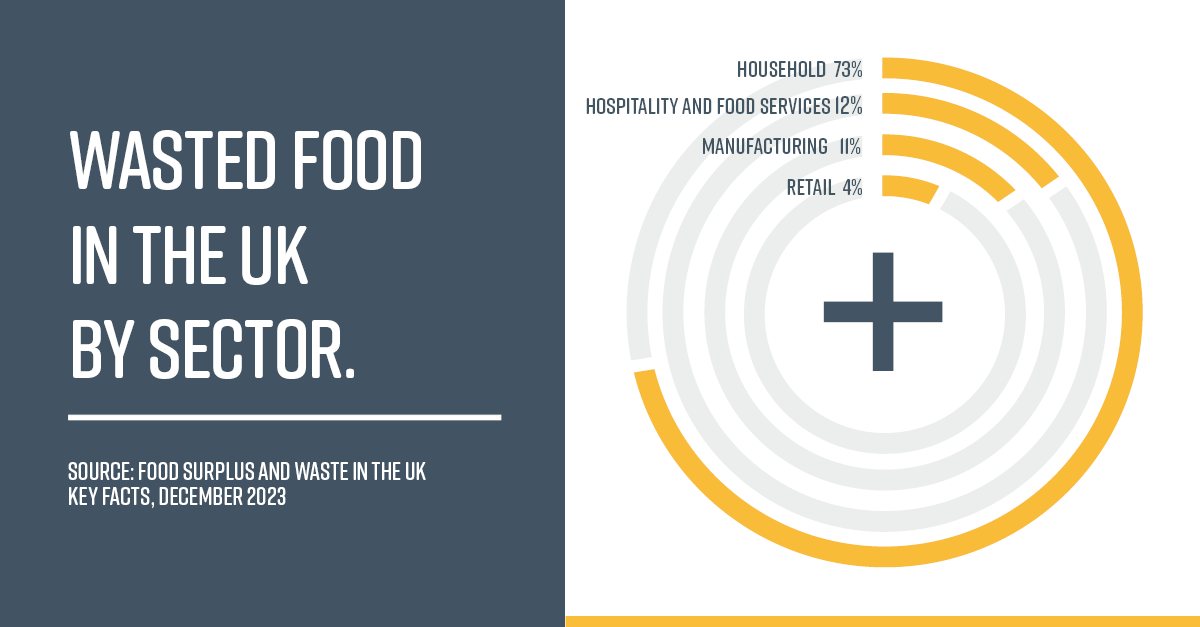Written by Jonathan O’Brien, leading procurement expert and CEO of Positive Purchasing Ltd. Jonathan and his team work with global blue-chip organizations to help transform their procurement capability.
Increasing consumer pressure is a huge part of what is driving organizations to develop their sustainability initiatives and support improved human rights. Customers are literally voting with their wallets by demanding ever more green and sustainable practices from their favourite brands. Greenwashing platitudes won’t cut it. Consumers are discerning and are increasingly demanding evidence, so woe betide the brand that talks the talk but fails to walk the walk!
Retailers are finding they need to do more in response to growing consumer demand for socially responsible practices and products, and one major retailer that is certainly committed to walking the sustainability path is ALDI. Launched as a discount supermarket in 1946 and arriving in the UK in 1990, ALDI has grown to a network of over 7,100 stores in 11 countries. Last year they were the fastest growing supermarket in the US and were named the UK’s favourite supermarket.
To better understand their approach and gain valuable insights, I spoke to Katharina Wortmann, Director of Sustainability Strategy for ALDI SOUTH Group. Here is how our conversation went:
We Start Where We Can Have the Greatest Impact
Jonathan: ALDI is a huge retailing business with thousands upon thousands of different items, sourced from all corners of the world. With such a range of potential environmental and social risks and impacts, where on earth do you start?
Katharina: As a food retailer, we can’t ignore issues around human rights, land use, water, healthy nutrition, and animal welfare. So, we start by conducting an assessment to ensure that we understand and prioritize those issues with the greatest impact on people and nature. Part of this assessment also helps us to get in touch with critical stakeholders like NGOs, customers, our suppliers, as well as our employees, and ensure that their perspective is accurately reflected.
Inevitably, there are some supply chains that are riskier than others. So we focus our resources where there are labour intensive processes in a country where governance gaps exist, or where there is low regulatory enforcement for human and environmental rights. We start in such places as this is where we can achieve the most significant impact.
Sustainability Must Not Be a Luxury
Jonathan: ALDI has said that “Sustainability must not be a luxury – we want to make sustainable products available at a discount price for all our customers around the world”. So, is it really possible for sustainability to cost less?
Katharina: It depends on what you mean by “cost less”. I think given where the food industry is right now, it’s almost impossible to produce products sustainably at the same cost price as those we consider conventionally produced. As a discount retailer, we need to offer our customer attractive prices which we aim to achieve through business efficiency – keeping our internal structures lean, focusing on the essentials and having a strategically limited product range.
We are also adapting our buying approach by starting to internationalize our buying practices and bundling volumes wherever possible. We have also looked into shortening supply chains by going to the source, then we pass the resulting cost efficiency savings on to our customers.
One Third of Food Production is Wasted
Jonathan: Increasingly, we are choosing more sustainable products, which is good, but we throw things away too easily, taking the best-before date as a deadline. ALDI have embraced the concept of “the wonky”, selling perfectly good produce that other supermarkets may reject. What else are you doing to minimize food waste?
Katharina: It is a heartbreaking statistic, but did you know that one-third of the food that is produced globally is wasted? If food waste were a country, it would be the third biggest contributor to greenhouse gas emissions!
Food waste not only serves to exacerbate food insecurity, but it is also an indication of inefficiencies both in your supply chain and in your operations. To fix this, you need to innovate – you need to be daring and also be prepared to accept some inevitable failures along the way to success. Wonky food is becoming well accepted now because the food is as good and tasty as the other “spotless” foods.
Sustainability Starts at the Top – But is Also on the Ground
Jonathan: I’m interested in how ALDI actually does this. Tell me a little bit about the setup, what does it look like, and crucially, does this go right to the top of the organization?
Katharina: Sustainability has become a top priority for management, especially our top management.
We have sustainability teams in all the countries where we operate, our international sustainability department, plus two specialist units, one in Bangladesh and one in Hong Kong, who work closely in the market, with the factories and the suppliers.
Jonathan: Consumer behaviour is progressively changing and demand for more sustainable products is increasing, so, how do you monitor your customer’s changing attitudes and needs?
Katharina: We conduct regular surveys and studies, and we know that there is a huge shift in customer demand, especially amongst the younger demographics, who put sustainability at the center of their buying criteria. While there is a strong focus on certification and product labelling, customers are looking beyond this and wanting to understand how the company is contributing to mitigating global sustainability challenges such as the food crisis and fighting climate change.
Communicating the full extent of our impact is tough. You can’t put your commitment to human rights due diligence on a product label!
But we never forget that we have a much wider base that we need to engage and listen to, including NGOs, suppliers, communities, workers, governments and broader stakeholders, all of whom can influence our sustainability strategy and even our product portfolio.
Jonathan: Are suppliers ready and willing to implement sustainability initiatives, or is it more complex than that?
Katharina: Most of the sustainability solutions are not simple or straightforward because every supply chain and every product is different. The majority of our suppliers are actually small and medium-sized enterprises, and this can mean they lack the knowledge or the capability to understand complex requirements if we were to simply issue instructions at them. What you need to do is develop solutions that are targeted at the specific supply chain challenges and then find approaches that work for everyone. To do this, you need open and honest dialogue.

The Most Valuable Investment You Can Make in Your Supply Base is Time
Jonathan: So, how do you help and encourage your suppliers to come along on that journey with you?
Katharina: We learned early in the process that you need a very strong supplier base to build resilient and sustainable supply chains, and the most valuable investment you can make in them is time. This is especially true at the start when you begin to engage with suppliers.
Take time to really get to know your supplier base and understand:
• Their specific capabilities.
• What they can offer you.
• Their limitations.
Likewise, take time to ensure suppliers fully understand exactly what you need from them.
There Is No Substitute for Being on The Ground and Talking To Your Supply Partners
Jonathan: You have a direct relationship and a contract with immediate suppliers so, to a degree, it’s straightforward. But in what could be a very protracted supply chain, running to remote parts of the world, with different legislation – how do you drive change?
Katharina: Aside from risk analysis, it’s about talking to those who are affected, then listening, learning, and making informed decisions together. This dialogue is becoming part of our buying process, where we need to understand the impact of our decisions on people and the environment, then take joint actions to actually drive improvement.
We are increasing our trips to sourcing countries with the buying teams to visit factories and farms together, by being there and talking to the supply chain in the lower tiers, we get insights and develop a far greater understanding of how everything is correlated or interrelated.
Our products are produced in so many different countries and in so many different cultural environments that a ‘one size fits all’ approach will always fail to drive improvements. There is no substitute for being on the ground, talking to your business partners – this is essential to effectively drive change.
Sustainability in a Time of Global Instability
Jonathan: Between dramatic climate events, political upheaval, and the war in Ukraine, it is an unstable and volatile environment for everybody, let alone somebody with such a complex supply chain as yourselves. How does this global uncertainty influence your supply chain decisions?
Katharina: From a sustainability perspective, it’s impossible to completely control the supply chain and the risks associated with it.
Take our cashew supply chain, for example. West Africa is the biggest producer of cashew nuts. I think it accounts for approximately 60% of the global harvest, but only 10% are actually processed there. Raw cashews are shipped to Vietnam and India for processing, then back to Europe to be sold in our stores.
So, we did a detailed analysis of the supply chain, then decided to invest in partnerships with smallholder farmers, cashew suppliers and processors in West Africa to grow capabilities in the region. This meant we could support the livelihood of the farmers, factory workers as well as their families, and ensure they get fair pay. At the same time, we build a more resilient and diverse supply chain.
However, not every supply chain can be handled like this, so look for opportunities to go into the supply chain and question:
• Do we need this stuff?
• Do we need this particular player?
• Can we shorten the chain?
• Can we maybe relocate in order to make them shorter, then make them more transparent and controllable?
A Good Supplier Relationship Is Like a Three-Legged Stool
Jonathan: I am hearing that relationships are a key theme here. Historically, in the UK, the retail industry hasn’t enjoyed the best of relationships, having wielded huge power and pushed prices, especially for small producers, down.
Going forward, if sustainability now becomes a key requirement, does this dilute the commercial leverage? How do you get over that?
Katharina: Actually, it’s exactly the opposite. I would say it strengthens the relationship and, as a result, the commercial leverage. I heard a colleague from another industry describing their relationship with suppliers as a three-legged stool – if you break one leg, the whole thing collapses. I like this metaphor for everyone depending on each other. But this is unimaginable in a transactional tender-driven relationship. As a company, we need to give, and equally, our suppliers need to give back so that nobody can risk damaging the commercial relationship. This mindset enables us to try new ways and rethink all approaches, and, as a consequence, we have started to pilot projects where sustainability now defines the way we buy.
Sustainability Training Is Imperative
Jonathan: Did you need to train your procurement team to equip them to make sustainability part of their requirements and engage suppliers in deeper sustainability conversations?
Katharina: Absolutely. We do have a range of training programs in place, starting with onboarding for new buyers. A key part of the training is to encourage them to plan their specific contribution to achieving our sustainability strategy, which then encourages ownership of the overall goal. Additionally, we conduct regular sustainability training for our buying teams, with a specific focus on their product areas. Last year, we ran some sustainability training that was driven by the buying teams and aimed at enabling us to really speak the buyers’ language.

Improved Sustainability Does Not Always Mean Increased Costs
Jonathan: We know that ALDI is working to ensure that sustainability is not a luxury, but frequently more sustainable production practices can result in increased costs. Does increasing sustainability mean you just have to pay more?
Katharina: Not necessarily. I’ve spent a lot of time working in textiles, so I like to refer to cotton, where there are similar problems. The cotton farmers are so removed from our operations, with 6, 7 or 8 tiers in between, and sometimes it can be bought through the stock market. So, with almost no leverage on the cotton farmers, paying more would not reach where it’s really needed.
So, you need to change the way you buy; you need to change your supply chains and to alter something here, you have to go to the source. So now, in cotton, we are working with our business partners to go directly down to the cotton farmers. We are cooperating with about a thousand smallholder farmers to transition from conventional cotton to organic cotton, and we are supporting them in the transition process.
This enables us to understand their mindset, their practices, and their needs so we can react to these challenges. Working with them directly also gives us unique leverage over them, so we can ensure that they completely understand our expectations and the standards that they need to meet.
Needless to say, this is not a one-size-fits-all solution. Just because this works with a thousand cotton farmers it doesn’t mean it will work with all the cotton you source, or if it’s successful in cotton, the same approach will work in flowers. But it is a very good start.
Plastic Is Not the Ultimate Evil – Provided We Manage it Properly
Jonathan: Packaging is a key aspect to address in any sustainability strategy, especially plastic as not all plastic is recyclable. So, how are you approaching the whole area of plastic in your supply chain?
Katharina: First, let me clarify that plastic per se is not totally evil, provided we manage it properly – meaning the design, the life management and reducing harmful impacts. However, you’re right; there is far too much waste and plastic in the industry.
We work to understand the recycling infrastructure available in each of our markets because they are wildly different. We then create a recyclability guide for our suppliers to help them use materials which can be locally recycled. At the same time, we upskill the buying teams to make them aware of the importance of sustainable packaging, then back this up with technical support to fully integrate sustainable packaging into everyday business, working with our suppliers to make sure that they meet our packaging goals.
We have set out clear recycling targets up to 2025, which has become an important criteria when we are selecting new suppliers. They need to adopt the same level of ambition in terms of sustainable packaging.
Katherina’s Three Top Takeaways
Jonathan: And finally, what would be your three top takeaways for driving sustainable procurement?
Katharina:
- Understand your supply chain and seek meaningful dialogue with your business partners – even with the lower tiers of your supply chain. You cannot develop impactful solutions without getting those who need to implement it on board.
- Be innovative and daring. If you stick to the same processes and only bolt on sustainability, it will cost you. So, rethink, innovate, and scale those approaches that work.
- Your C-Suite must commit to your sustainability goals; only then will employees, especially the buying teams, feel empowered to act.


